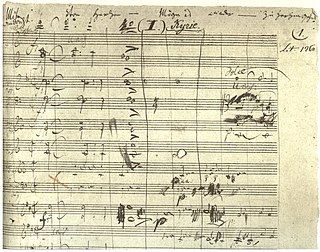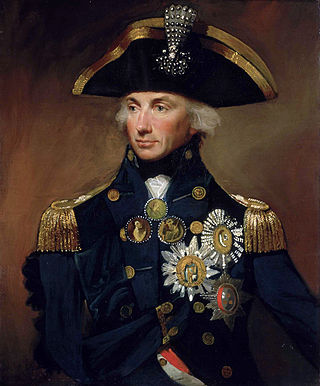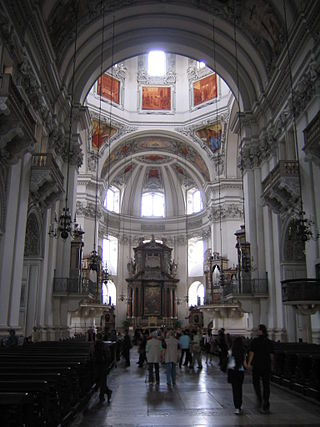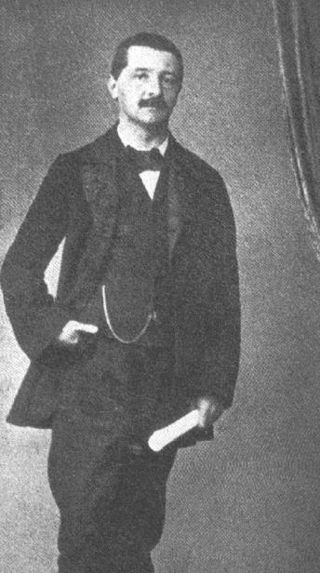
The Missa solemnis in D major, Op. 123, is a Solemn Mass composed by Ludwig van Beethoven from 1819 to 1823. It was first performed on 7 April 1824 in Saint Petersburg, Russia, under the auspices of Beethoven's patron Prince Nikolai Galitzin; an incomplete performance was given in Vienna on 7 May 1824, when the Kyrie, Credo, and Agnus Dei were conducted by the composer. It is generally considered one of the composer's supreme achievements and, along with Bach's Mass in B minor, one of the most significant Mass settings of the common practice period.

Loyset Compère was a Franco-Flemish composer of the Renaissance. Of the same generation as Josquin des Prez, he was one of the most significant composers of motets and chansons of that era, and one of the first musicians to bring the light Italianate Renaissance style to France.

Great Mass in C minor, K. 427/417a, is the common name of the musical setting of the mass by Wolfgang Amadeus Mozart, which is considered one of his greatest works. He composed it in Vienna in 1782 and 1783, after his marriage, when he moved to Vienna from Salzburg. The large-scale work, a missa solemnis, is scored for two soprano soloists, a tenor and a bass, double chorus and large orchestra. It remained unfinished, missing large portions of the Credo and the complete Agnus Dei.
Leonel Power was an English composer of the late Medieval and early Renaissance music. Along with John Dunstaple, he was a dominant figure of 15th century English music. Primarily a composer of sacred music, Power is the best represented contributor in the Old Hall Manuscript.

The Missa in angustiis, commonly known as the Nelson Mass, is a Mass setting by the Austrian composer Joseph Haydn. It is one of the six masses written near the end of his life that are seen as a culmination of Haydn's composition of liturgical music.

Missa in tempore belli is a setting of the mass by Joseph Haydn. It is catalogued Mass No. 10 in C major. Known also as the Paukenmesse due to the dramatic use of timpani, it is one of the most popular of his fourteen mass settings. The autograph manuscript contains the title "Missa in tempore belli" in Haydn's handwriting.

The Krönungsmesse, composed in 1779, is one of the most popular of Wolfgang Amadeus Mozart's 17 extant settings of the Ordinary of the Mass. It can be classified as either a Missa brevis or a Missa solemnis because although it includes all the sections of the Ordinary, it is relatively short.

Missa brevis usually refers to a mass composition that is short because part of the text of the Mass ordinary that is usually set to music in a full mass is left out, or because its execution time is relatively short.
The Tournai Mass is a polyphonic setting of the mass from 14th-century France. It is preserved in a manuscript from the library of the Tournai Cathedral.
The Toulouse Mass is a polyphonic 14th-century musical setting of the Mass found in a manuscript in the municipal library of Toulouse. It was not composed by a single individual, but is presumed to have been compiled and performed as a unit. The present location of Toulouse does not necessarily mean it was composed there.

The Missa de Beata Virgine is a musical setting of the Ordinary of the Mass, by Renaissance composer Josquin des Prez. Though formerly believed to have been a late composition due to stylistic reasons, evidence from Burchard’s Diary proves that the mass was written sometime before September 23, 1497. It was the most popular of his masses in the 16th century.

The Barcelona Mass is a polyphonic mass written around 1360. Together with the Messe de Nostre Dame by Guillaume de Machaut and those of Toulouse, Tournai and the Sorbonne, it is one of the earliest preserved complete polyphonic musical settings of the Ordinary of the Mass. It is believed to belong to the repertoire of the Papal court at Avignon and is also linked to the chapel of King Martin I of Aragon.
Most of Johann Sebastian Bach's extant church music in Latin—settings of the Mass ordinary and of the Magnificat canticle—dates from his Leipzig period (1723–50). Bach started to assimilate and expand compositions on a Latin text by other composers before his tenure as Thomaskantor in Leipzig, and he continued to do so after he had taken up that post. The text of some of these examples by other composers was a mixture of German and Latin: also Bach contributed a few works employing both languages in the same composition, for example his early Kyrie "Christe, du Lamm Gottes".
Missa Sanctissimae Trinitatis in A minor, ZWV 17, is the a vocal-instrumental sacred work, written by Czech Baroque composer Jan Dismas Zelenka. It was completed in 1736 as the first of five high masses he wrote in the last ten years of his life.

The Mass No. 1 in D minor, WAB 26 by Anton Bruckner, is a setting of the Mass ordinary for soloists, mixed choir and orchestra, and organ.
The Missa Gaudeamus is a musical setting of the Ordinary of the Mass by Franco-Flemish composer Josquin des Prez, probably composed in the early or middle 1480s, and published in 1502. It is based on the gregorian introit Gaudeamus Omnes and its setting is for four voices.

The Windhaager Messe, WAB 25, is a missa brevis composed by Anton Bruckner in 1842.

The Messe für den Gründonnerstag, WAB 9, is a missa brevis composed by Anton Bruckner in 1844.
The Missa Brevis is a mass written by Giovanni Pierluigi da Palestrina first published in 1570 in Palestrina's Third Book of Masses and reprinted several times since. Its title may be misleading, as a missa brevis commonly refers to a short mass, which this is not. It is among the most performed of Palestrina's polyphonic repertoire.

Missa Providentiae is a Kyrie–Gloria Mass in D minor composed by Antonio Caldara, which around 1728 was expanded into a Missa tota by Jan Dismas Zelenka: this composer derived a Sanctus and Agnus Dei from Caldara's Kyrie and Gloria, and added a Credo, ZWV 31, of his own hand. Around 1738–1741, Johann Sebastian Bach made a copy of a Sanctus, BWV 239, which was based on the first section of the Gloria of Caldara's Kyrie–Gloria Mass.













